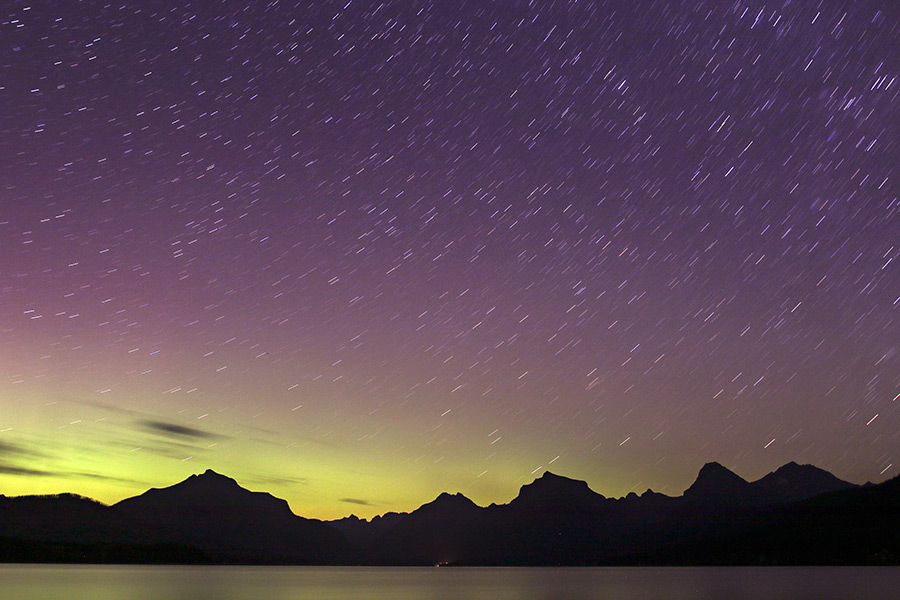WEST GLACIER — Eighty percent of the United States’ population lives in an area where they can’t see a true dark sky. Around the globe, thanks to light pollution, only one-third of humanity can look up at the sky at night and clearly see the Milky Way.
For Glacier National Park interpretive ranger Lee Rademaker, that means every time the park prepares to host a night sky viewing, “we’re about to blow two-thirds of these people’s minds.”
For years, Glacier and nearby Waterton Lake National Park have been touting their dark night sky as another critical natural resource, just as important as glaciers or goats. On April 28, officials from the United States and Canada gathered at West Glacier to celebrate Waterton-Glacier International Peace Park being named the first trans-boundary International Dark Sky Park.
The designation from the International Dark Sky Association follows a decade of work between the two parks and partners like the Glacier National Park Conservancy, which has financially supported Glacier’s night sky education program.
“It is sometimes hard to comprehend how big of an issue light pollution is, and in many ways, the dark sky is an endangered species,” said Glacier National Park Conservancy board member John Donovan. “(With this designation) we are leaving an incredible gift to future generations of park visitors who may never be able to see a dark sky elsewhere.”
Mark Biel, Glacier’s natural resource program manager, helped spearhead the effort to get the international peace park designated as a dark sky preserve.
“This was not a simple one-page application,” Biel said of the decade-long effort. “There is a lot of work that needed to be done.”
Researchers had to take sky quality measurements in some of the park’s darkest areas. According to Biel, most places within the park have an SQM rating of 21.5 to 21.8, just a few points below a perfect 22 for a moonless night with zero artificial light. For comparison, the SQM rating of an overly lit urban area would be in the mid-teens, Biel said. Getting those sky quality measurements can be challenging. Spring and fall tend to be the best times because the nights are longer than in summer. The measurements can’t be taken in winter because any snow on the landscape would reflect into the sky and throw off the readings.
In order to protect the darkness and maintain the designation, at least 67 percent of the lights within the park have to be night-sky friendly. That means the light is aimed at the ground and doesn’t illuminate the sky above. Currently, 29 percent of the park’s more than 2,000 lights are night-sky friendly; Biel said the 67 percent mark should be obtainable within the next year and a half.
The final component of the dark sky designation is maintaining a robust education program. During the busy summer months, Glacier hosts day and evening sky viewings that attract 30,000 people annually. The park has also hosted popular star parties at Logan Pass once or twice a year that draw hundreds of people.
Local photographer John Ashley has been capturing Glacier’s night sky on film for more than 30 years and said the designation is an important first step in protecting that critical resource. However, he would like to see even more work done to educate visitors on the importance of a dark sky, and he hopes the park erects a permanent interpretive display about dark skies within the park.
Superintendent Jeff Mow said protecting and promoting the park’s night sky would be an ongoing project. He said it wouldn’t be possible without the help of many parties in and out of the park.
“This is a celebration of partnerships,” he said. “This isn’t something the National Park Service could have pulled off by itself. It took a huge team to get us here today.”
Mow’s Canadian counterpart, Waterton Lakes National Park Superintendent Ifan Thomas, said the designation would help inspire a new generation of visitors.
“The night sky is a universal natural resource for all humankind,” he said, “one that has inspired artists, poets and explorers for a millennia.”
